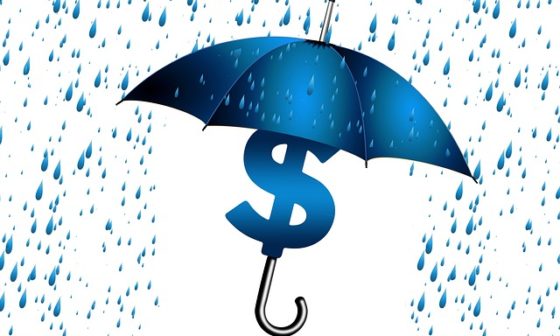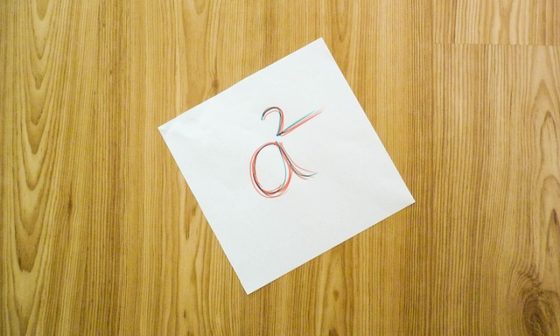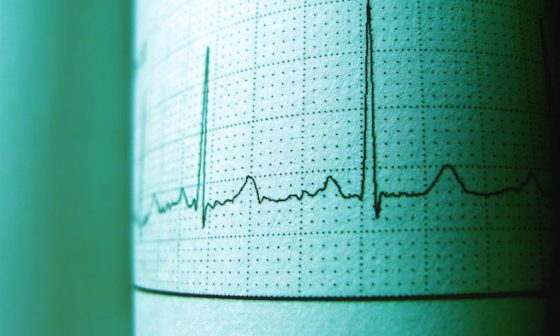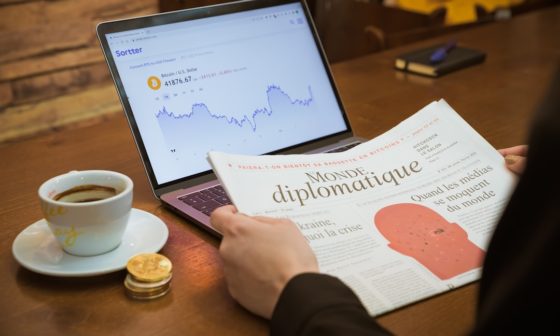
Technical indicators are deployed by most traders in the markets. One of the major problems faced while using these indicators is the matter of false signals, which’s what the Ichimoku Cloud tries to resolve. But what’s the indicator made of? How to use it in trading strategies?
The Ichimoku Cloud is a Japanese technical analysis method that provides traders with a compilation of technical metrics that can outline support and resistance, directional trend momentum, and generate trading signals in any financial market.
The trading system, using several moving averages, creates a ‘cloud’ structure against the market prices to determine if a certain asset’s current trend will continue in the future.
It’s known as a rather more advanced technical indicator but one that several traders prefer to use. It offers a greater number of data points compared to standard candlesticks, and most traders acknowledge it as an improvement over the more standard chart setups.
Ichimoku Kinko Hyo is the Japanese name of this technique, which is translated as “One Glance Equilibrium Chart”. With one look, chartists can identify the dominant trend of the market (bearish/bullish) and look for the correct time to enter or exit to attain maximum gain.
The below chart demonstrates what the Ichimoku Cloud Indicator looks like.

What Exactly is Ichimoku Cloud Indicator?
The Ichimoku Cloud is a famous technical indicator created to help traders learn everything about the trend of the market, including its direction, support, resistance levels, price momentum, and even trade signals.
It was developed by a Japanese journalist named Goichi Hosoda in the 1930s. It took him nearly 30 years to polish this innovative technical analysis tool before letting it out in the 1960s to the public.
Though at first look, the Ichimoku system (the signal lines which form its parts) may appear somewhat overly complicated. But once traders learn to read the Ichimoku Cloud charts and can identify the signals the charts display, the whole process becomes much easy.
Often used for different timeframes and markets, an Ichimoku chart consists of five lines, where each line provides vital information regarding the price action. Besides, the area between the two lines is filled with color that forms a cloud-like view.

Regarding the name of this trading system, let us look at it more closely as this provides great information about its design and goal.
- Ichimoku means ‘one glance or ‘one look’
- Kinko means ‘balance’ or ‘equilibrium’
- Hyo means ‘chart’ or ‘graph’
The Ichimoku technique practically operates as an all-in-one trading system, which is ideal in its capacity to filter between negative and positive market phases. Some points to note concerning this are:
- The dominant signal is bullish (long signal) when the price rises above the Cloud.
- The dominant signal is bearish (short signal) when the price drops below the Cloud.
- Choppy price action is anticipated when the price enters the Cloud (and no trading activity should be started).
The Ichimoku Cloud System also exhibits internal signals, which can be used to confirm/validate future price projections created by the Cloud. To understand these minor trading signals, we should examine each of the components of the Ichimoku Cloud.
Components of Ichimoku Cloud System
The Ichimoku Cloud Indicator consists of components, and each of them states information regarding price movements. They are as follows:
- Tenken Sen
Also known as the conversion line, Tenken Sen is 9 days moving average line that exhibits the midpoint of the 9-day highest-low range, which is around two weeks.
It’s a major indicator and moves quickly with a decrease or increase in the price. It is the first line of support when prices move in an upward trend and the first line of resistance when prices move in a downward trend. The formula for calculating it is:
(9-period high + 9-period low) / 2
When the price rises above the Tenken Sen, the trend is bullish, and when the price goes below, the trend is bearish.

- Kijun Sen
Also referred to as the standard line, Kijun Sen is the 26 days moving average line that exhibits the midpoint of the 26-day high-low range, which’s around one month.
Since it moves slower than Tenken Sen as it has a greater number of periods, flatness in some zones can be seen. This flatness may be considered as resistance and support for the prices.
It is an important support level in an uptrend and a resistance level in a downtrend. When the Tenken Sen and prices are above this line, the prices are in the uptrend, and when Tenken Sen and prices are below this line, the prices are in the downtrend.
Moreover, when Kijun Sen is flat, it indicates a consolidated market and attracts prices like a magnet.
Since both Kijun Sen and Tenken Sen are moving averages, the bearish crossover takes place when Tenken Sen cuts Kijun Sen from above, and the bullish crossover takes place when Tenken Sen cuts Kijun Sen from below.
The formula for calculating it is:
(26-period high + 26-period low)/2

- Chikou Span
Also known as the lagging span, Chikou Span is the closing price of the current period plotted 26 periods back.
A trader should see that the Chikou Span isn’t facing any hindrance of Kumo clouds or candlesticks, and it’s free to move in all directions, either a downtrend or uptrend.
If it crosses the price from bottom to top, it can be a buy signal and vice versa.

- Senkou Span A
Also known as Leading Span A, Senkou Span A is the line that illustrates one border of the Ichimoku indicator, or Kumo. It makes the first part of the Kumo cloud. It behaves as the support level when the price is above it and the resistance level when the price is below it.
It’s calculated by taking the middle value of Tenken Sen and Kijun Sen and shifting to the future by 26-periods.
It is usually slanting along the prices and doesn’t stay flat because it takes a short period in its calculation.
It is calculated as:
(Tenken Sen + Kijun Sen) / 2

- Senkou Span B
Also known as Leading Span B, the Senkou Span B illustrates the other border of the Ichimoku Cloud or Kumo. This line is calculated by taking the middle value of the high and low of the last 52 periods and shifting by 26 periods to the future.
Since it takes a long time for calculation, it’s mostly flat. Moreover, it can be taken as the line of resistance when the price is below it and as the line of support when the price is above it.
It is the 2nd part of the Kumo Cloud. It’s calculated as:
(52-period high + 52-period low) / 2

The cloud itself is Kumo and is the area between Senkou Span A and Senkou Span B. While employing the Ichimoku strategy in trading, the edges of the cloud help describe the present and future support and resistance levels.
If Senkou Span A is above Senkou Span B, then it’s a bullish Kumo, and if Senkou Span A is below Senkou Span B, then it’s a bearish Kumo.
As per price changes, the Kumo cloud can vary in shape and height. The height of the cloud acts as a volatility indicator when greater price swings occur after a thicker cloud. This indicates stronger support and resistance levels.
Traders often look for Kumo twists in future clouds because they act as an indication of a likely trend reversal.
While Ichimoku cloud trading can look rather complex, the understanding of how and why all these lines are employed can help include the Ichimoku indicator in one’s trading strategy.
Besides, when we combine all the lines above, we get an Ichimoku Cloud as in the chart below, where each line tells us some information regarding the price action, as discussed above.

What Does the Ichimoku Cloud Indicator Tell You?
The Ichimoku Cloud Indicator exhibits relevant information at one look using averages. As mentioned above, the trend is up or down when the price is out of the cloud and transitioning or trendless when the price enters the cloud.
Traders often use the Ichimoku system as a region of support and resistance depending on the corresponding position of the price. The technical indicator provides support/resistance levels, which can be planned into the future. The Ichimoku Cloud chart differs from other technical indicators in that it provides support and resistance level for future dates and times, while others provide only for the current time.
Traders should deploy the Ichimoku indicator in combination with other technical indicators to boost their risk-adjustment returns. For instance, the cloud is often used together with the RSI (Relative Strength Index), which can help confirm momentum in a particular direction.
Moreover, it is also critical to look at the larger trend to know how the smaller ones fit within them. For instance, the price can push slightly above the cloud or into it temporarily before dropping again during a very powerful downtrend. If one focuses on the indicator only, one may miss the larger picture that the price was under powerful and continuous selling pressure.
Another way of using the Ichimoku system is crossovers. Like mentioned above, keep an eye on the conversion line to rise beyond the base line, particularly when it is higher than the cloud. This may be a strong buy signal. A trader can hold the trade till the conversion line falls below the base line. Besides, any other line can be deployed as exit points too.
Ichimoku Trading Strategies
By now, we know about all the components of the Ichimoku Cloud system, let’s discuss some trading strategies to use it.
Bullish Trading Strategy
The criteria to determine if the prices are in an uptrend using an Ichimoku Cloud are:
- Prices must be above Tenken Sen, and Tenken Sen must be above Kijun Sen.
- Both Tenken Sen and Kijun Sen must be rising along with the prices.
- Kijun Sen shouldn’t be too away from the price.
- Prices must be higher than Kumo.
- Future Kumo must be bullish.
Example:
Let’s consider an example of trading stock in an uptrend using the Ichimoku Kinko Hyo.
For instance, we have the monthly chart of Maruti Suzuki Ltd below.

The prices were consolidated till point A in the chart, and there was no particular order of Tenken Sen and Kijun Sen, so a trader must avoid this region for trading.
Tenken Sen emerges out of the bunch at point A, the prices begin moving above it, and Kijun moves below Tenken Sen.
It can also be seen that there isn’t any obstruction of Kumo clouds or price bars for the Chikou Span to move up.
Besides, there is a future bullish Kumo cloud as well. Since all the requisites of the uptrend criteria are fulfilled, it can be expected for the price to move uptrend from the consolidation area.
Next, it can be seen that there’s a large gap between Kijun Sen and prices at point B. Kijun stays flat too and can attract prices, so it is better to be cautious at this point.
After that, it can be seen how prices fall towards Kijun Sen and take support at point C. Here the Kijun behaved as a line of support and wasn’t broken by the price, so the trader should continue to hold this position.
The prices reversed from the slight drop and continued going upward, indicated by the future bullish Kumo cloud.
The prices continued moving upwards, with Tenken Sen below it and Kijun Sen below Tenken Sen, and the future Kumo kept bullish until point D.
Now a big gap can be seen between Kijun Sen and prices at point D. So, the trader must be cautious again.
Kijun attracted prices, and the prices broke this line ultimately. There is a bearish crossover at point E when Kijun overtakes Tenken from below. So it is better to close the buy position at this point because Chikou Span begins moving too and may face hindrances from price bars ultimately.
Bearish Trading Strategy
The criteria to determine if the prices are in a downward trend direction using an Ichimoku Cloud are:
- Prices must be below Tenken Sen, and Tenken Sen must be below Kijun Sen.
- Both Tenken Sen and Kijun Sen must be going downward along with the prices.
- Kijun Sen shouldn’t be too away from the price.
- Prices must be lower than Kumo.
- Future Kumo must be bearish.
Example
Let’s consider an example of trading stock in a downtrend using the Ichimoku cloud indicator.

In the above chart, investors bought Yes Bank to hope for a rebound.
The stock price started declining from point A when Tenken cut Kijun from above, signaling a bearish reversal.
At point B, Kumo cloud turned bearish due to the gap down opening and big red candlestick chart pattern.
At point C, a gap was formed between Kijun Sen and prices, but it did not break the resistance and continued to fall.
Ichimoku Cloud informed us that the stock is still in a downtrend and should not be bought unless it shows some sort of bullish reversal.
Limitations of Using the Ichimoku Indicator
Since the Ichimoku Cloud indicator has a lot of components, the chart can look busy. As a result, the trader can find difficulty in analyzing the stock. This problem can be solved by using charting software that allows specific lines to be concealed. For instance, all the lines can be concealed except Senkou Span A and Senkou Span B for the cloud. Every trader has to keep an eye on the lines that give the maximum information and then conceal the rest if all the lines distract.
The indication is founded on past information. Though two data points are plotted in the future, there’s nothing in the formula which is inherently predictive.
The cloud can turn irrelevant for an extended period as the price stays above or below the cloud. At times like these, Tenken Sen, Kijun Sen, and their crossovers become more vital as they usually adhere closer to the price.
Conclusion
Traders should know some essential things about Ichimoku Indicator. Firstly, one doesn’t need to know the method to calculate it. Secondly, traders should test various periods to know which works best for them. Thirdly, it’s recommended to be used conjointly with other indicators.
The Ichimoku charts have few limitations, however, it is neither better nor worse than current technical indicators like moving averages. It merely uses a different representation of the information.
Most importantly, the indicator may appear complicated at first glance, but it is also one of the easiest to use once a trader gets to know what every component says and how to use it.







